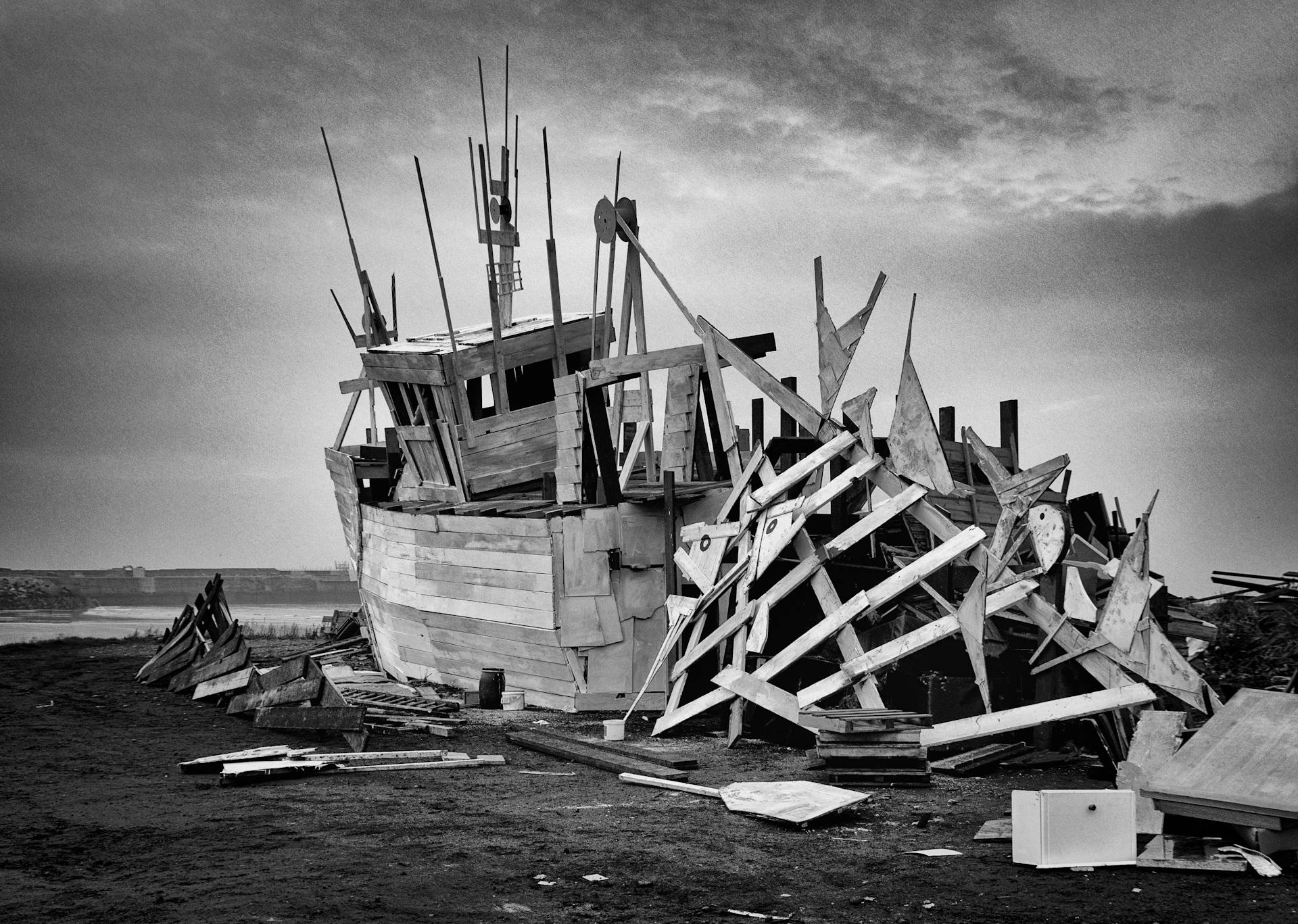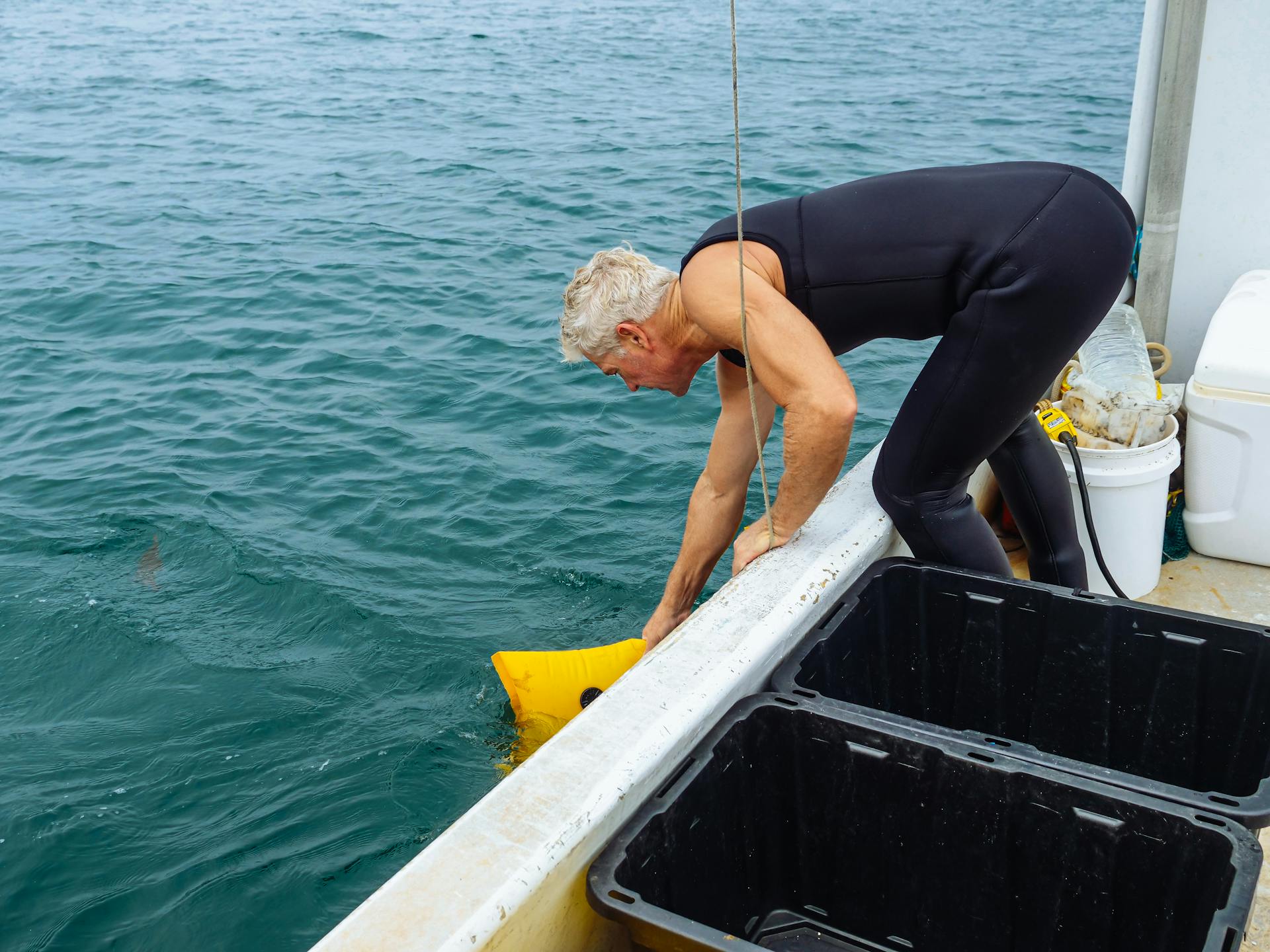
The MV Prestige oil spill was a devastating environmental disaster that occurred in 2002. The ship, carrying over 77,000 tons of heavy fuel oil, split in two and sank off the coast of Galicia, Spain.
The cause of the disaster was a combination of human error and design flaws. The ship's cargo was not properly secured, and a series of storms and rough seas further weakened its structure.
The resulting oil spill was one of the largest in history, releasing an estimated 19 million gallons of oil into the ocean. This had severe consequences for the local marine ecosystem.
Event
The MV Prestige was a vessel that encountered a series of unfortunate events.
On November 13, 2002, the Prestige was en route from Ventspils, Latvia to Gibraltar, carrying 77,000 metric tons of heavy fuel oil.
The ship encountered inclement weather off Costa de la Muerte, in Galicia, northwestern Spain, which caused a 50-foot hole on the starboard side.

This led to the crew being evacuated by rescue helicopters, and the ship drifted within four miles of the Spanish coast, already leaking oil.
The ship was refused permission to dock by the French, Spanish, and Portuguese governments, who were trying to avoid pollution of their coastlines.
After several days of sailing adrift, the vessel split in half on November 19 in Portuguese waters.
It eventually sank only about 250 kilometers from the Spanish coast, releasing over 17 million US gallons of oil into the water.
In total, the oil leak resulted in the spill of 20 million US gallons of oil.
Cleanup and Investigation
Thousands of volunteers joined the public company TRAGSA to help clean the affected coastline after the oil spill. They worked tirelessly to recover most portions of coastline from the effects of the oil spill and accumulated usual contamination.
A massive cleaning campaign was a success, and a year after the spill, Galicia had more Blue Flags for its beaches than in the previous years. This award recognizes beaches with the highest standards in the European Union.

The government initially thought just 17,000 tons of oil had been lost, but later announced that half of the oil had been lost, and eventually, the figure rose to about 63,000 tons. This is a significant amount of oil that had to be removed from the wreck.
The remaining 13,000 m³ of cargo oil was removed from the wreck by means of aluminium shuttles and remotely operated vehicles (ROVs) in 2004. This was a crucial step in the cleanup process.
More than eighty percent of the tanker's 77,000 tons of fuel oil is now thought to have been spilled off Spain's north-west coast. This is a staggering amount of oil that had a devastating impact on the environment.
Experts predicted marine life could suffer pollution from the Prestige for at least ten years due to the type of oil spilt, which contains toxic chemicals called polyaromatic hydrocarbons. These chemicals can poison plankton, fish eggs, and crustaceans, leading to carcinogenic effects in fish and humans.
The Prestige oil spill was the largest environmental disaster in the history of both Spain and Portugal, polluting thousands of kilometers of coastline and more than one thousand beaches.
Legal Consequences

The Prestige oil spill disaster had significant legal consequences. The captain of the ship, Captain Mangouras, was arrested after Spain refused to let the ship into port, a decision that has deep historic roots.
The Spanish government brought a civil suit against the American Bureau of Shipping (ABS), the classification society that had certified the Prestige as "in class" for its final voyage. The lawsuit was filed in the United States, but was eventually dismissed by a US court.
The presiding judge ruled that ABS is exempt from direct liability for pollution damage under the International Convention on Civil Liability for Oil Pollution Damage (CLC). The judge also ruled that the US Courts lack the necessary jurisdiction to adjudicate the case since the United States is not a signatory to the CLC.
Spain's original damage claim against ABS was a staggering $700 million. The case was seen as a potentially precedent-setting one that could have far-reaching consequences for international classification societies.
Background and Design

The MV Prestige was a roll-on/roll-off (RORO) cargo ship that was built in 1996. It had a gross tonnage of 19,648 tons and was 186.8 meters long.
The Prestige was designed to carry a variety of vehicles, including cars, trucks, and even buses, on its deck. This type of cargo ship is particularly useful for transporting large quantities of vehicles.
Its cargo capacity was 3,400 lane meters, which is a significant amount of space for loading vehicles. This allowed the Prestige to carry a large number of vehicles at once.
The Prestige was operated by the Spanish shipping company Repsol YPF. It was primarily used to transport vehicles from Portugal to the Canary Islands.
Frequently Asked Questions
Who owned the MV Prestige?
At the time of its sinking, the MV Prestige was owned by Mare Shipping, a company registered in the Bahamas.
Sources
- https://discovercroatia.com.au/ships/prestige/
- https://alchetron.com/Prestige-oil-spill
- https://en.wikipedia.org/wiki/MV_Prestige
- https://safety4sea.com/cm-learn-from-the-past-prestige-sinking-one-of-the-worst-oil-spills-in-europe/
- https://climatecasechart.com/non-us-case/spain-v-apostolos-mangouras-others-prestige-case/
Featured Images: pexels.com


